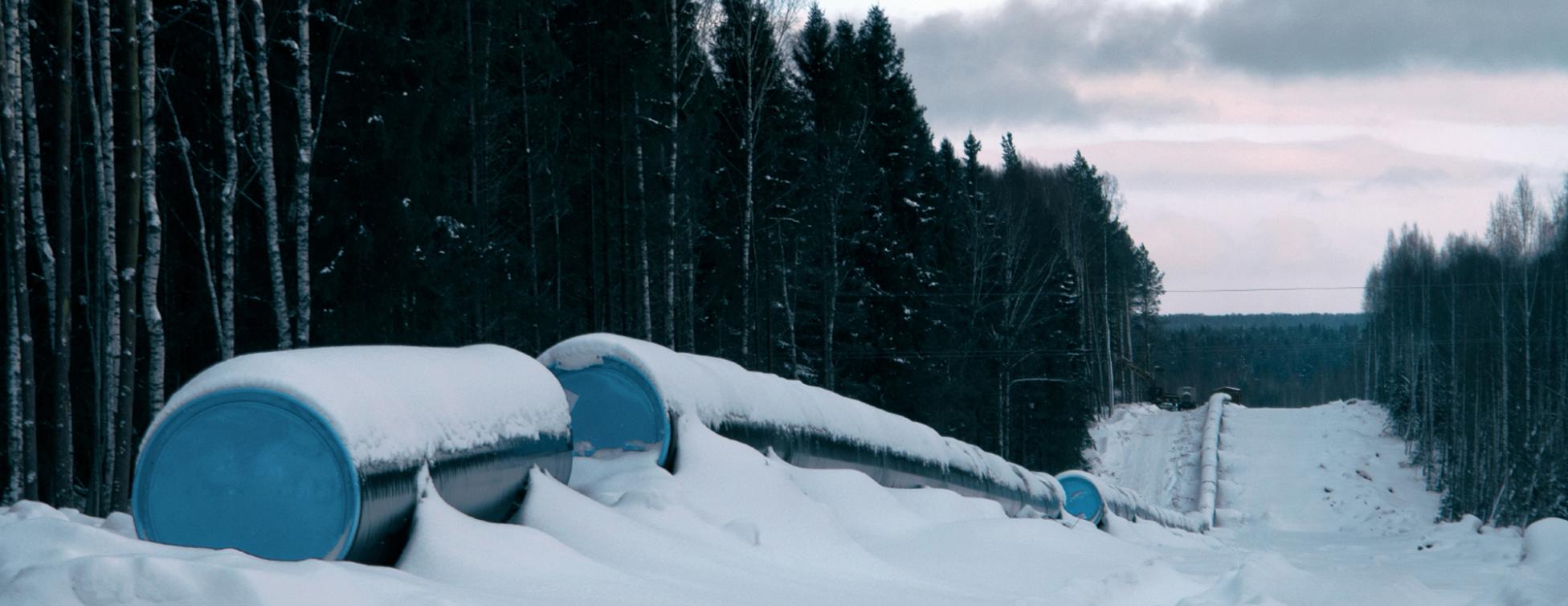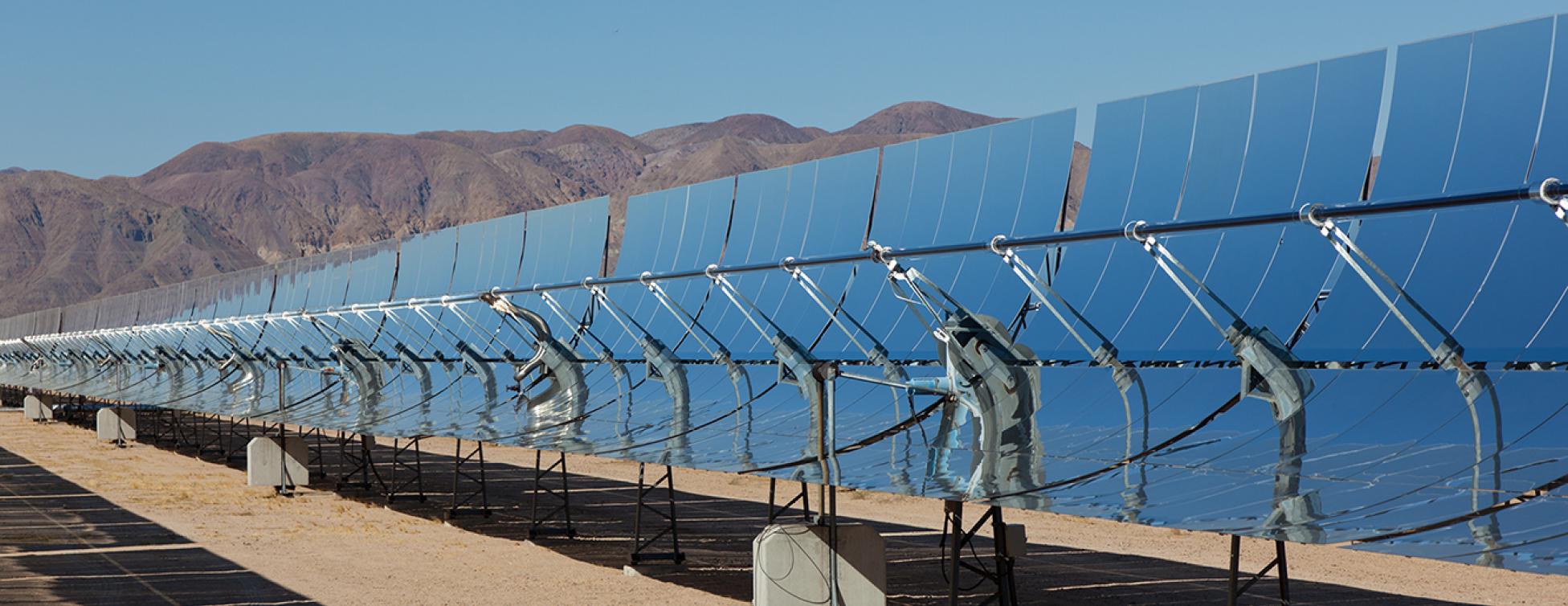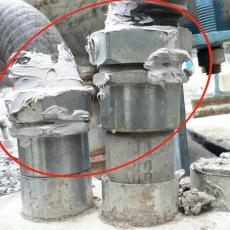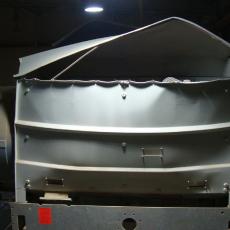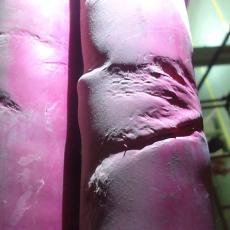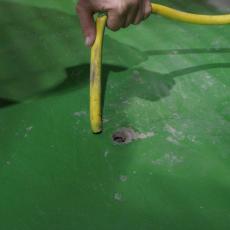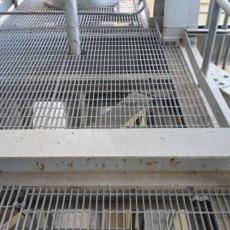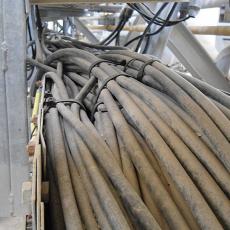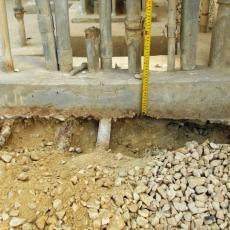Electrical
Flex-abuse
Where labor and supervision are less skilled, electrical installation quality can be very poor. However, keep in mind that all EPC contracts have codes, standards, and often owner specifications that provide overlapping requirements that mandate this be done properly and that it is verified by contractor QC personnel. But, to no avail.
One aspect seen on almost every developing country project, is the abuse of liquid-tight metal flex. Please note the photos are from NEW plants, and alarmingly in some cases not even to COD.
Flex is designed to be used in locations where there is differential movement between a piece of equipment and conduit feeding a circuit to the equipment. Flex is not intended to be a shortcut device where an electrician does not have the skill to make proper conduit bends.
Far too often, flex is used where it should not be. To put an approximate number on it, easily 50% of flex use should not exist.
In other cases, the proper fittings are not provided on each end, grounding continuity is not assured, excessive flex length is used, leaky installation is... Read more
Costs somewhat more to perform correctly.
The life-cycle ramifications for owners can be significant due to water damage of electrical and I&C devices leading to intermittent system ghost trips and failures.
RTV to Fit
EPR has been in many greenfield plants just prior, or just after COD. Basically, new plants.
Without hesitation, liquid-tight flexible metal conduit (flex) is abused and mis-installed possibly more than any other heavy industrial components, especially in developing regions.
Often labor is not given proper instruction and almost never the proper tools to install this system correctly. This results in fittings that are, at best, hand tight. Consequently, there are grounding concerns even in the best cases where flex appears to be installed correctly, assuming an internally grounded flex is used and the correct fittings. In most cases leaks occur and instead of tightening the fittings, a big smear of RTV is used as a seal. This usually does not work and creates a mess of the install.
In some plants, we have run studies in limited areas intending to be ‘representative’ and found >95% of flex fittings are loose.
For Owners concerned about the longer-term implications of moisture in electrical and instrument equipment, this is not a positive finding.
None. Probably costs more to perform incorrectly.
The cost of repair would seem manageable, but this defect is so pervasive in most plants that cost can be material. However, the O&M cost for an Owner can be even higher due to device mortality.
Spaghetti Vaults
To get a quick understanding of an EPC Contractors performance, look at a few cable vaults. Contractors that have reasonably competent labor and supervision can typically plan cable pull work and install the requisite raceway and supports in advance of their work. This is more than a nice-to-have, since it is a code requirement, and with good reason because it is intended to greatly reduce cable damage.
In a vault there are a great many details that need attending, like cable voltage separation, grounding issues, cable bend radiuses, combed/groomed/tied cables, water management, and a variety of meaningful details.
The pictures are from a couple large, NEW, greenfield plants in developing countries that were recently completed. It is possible for an Owner to monitor and insist the pictured results are avoided, but it does take engagement and follow-through.
If you see this condition start to develop on your project, it is a strong forward indicator of broad electrical quality and safety concerns. Often this condition can lead to grounding, relay, intermittent instrument faults... Read more
None.
Condition is very difficult to repair, and expensive after-the-fact because usually cable must be replaced with the coincident outages.
Generator Circuit Breaker (Explosion)
The more interesting findings during our assessments are related to poor commissioning practices. These items tend to be more complex than construction defects and typically more serious from a safety, equipment protection, and reliability perspective of the asset.
One case involved an "explosion" of a generator circuit breaker. The event took place about one year after COD, destroyed the GCB and damaged an F-class turbine generator (both stator and rotor).
The Event: During a unit start the operator was at the elevated GCB panel. The generator field breaker was closed, so the generator exciter was energized. The operator inadvertently pushed the earthing switch button which activated. The earthing switches are NOT designed to be activated when the generator/exciter is energized. The switch exploded (vaporized) with the GCB housing being damaged and opened like a tin can. The operator was shielded from bolts and other shrapnel, but luckily did not fall from the platform.
Background: The GCB vendor provided a set of dry contacts on each earthing... Read more
Possibly only a time savings, but doubtful.
Unit was out of service for 6 months. New breaker, rewound stator and rotor, recommissioning of unit... All-in costs between contractor, owner, an insurance company was about $8mm.
5kV Cable Mischief
The photos of the damaged 5,000-volt cables are from three plants that recently entered operation (at time of inspection). For every photo shown, there were dozens of similar defects.
In some instances, the cuts and holes appear to be deep enough to damage the copper shield tape. Damage to the outer jacket will allow moisture into cable jacket and cause premature failure.
The cables were seemingly not installed in a workmanlike manner and appear to have been damaged during cable pulling. This casts suspicion of the installation methods, field construction supervision, and quality control inspection processes. As a reminder, pulling cable in a raceway with sharp edges or in a manner that damages the cable is a code violation.
This type of defect does not need much explanation, but in addition to being prohibited by electrical codes, the EPC contract also had specific language related to damaged cables and accepted project methods for resolving such issues. In the absence of an Owner approved exception, there were none, the cables needed to be replaced.
In addition, the... Read more
None.
Cost of proper repair is cost of replacement. This is very high. Cost to Owner depends on how many failures related to fires, outages, or injury occur.
Grounding
Along with a few other items, grounding is almost universally abused in developing region heavy industrial construction. Worse, it is usually not addressed in commissioning, or by construction QC.
Part of the problem stems from ignorance by craftsmen about the importance of grounding. This is compounded with the fact that proper exothermic welding and crimping tools are often not provided. Perhaps supervision is also unaware of the details involved, or perhaps uninvolved. Whatever the reason, this is an important concern and engaged oversight by a qualified owner’s representatives should easily spot and improve this condition early. That said, on every one of the projects in thee pictures, an OE was at the site and well-staffed, so that really leaves competence or a lack of leadership support as the possible issues.
Regarding the defects. A plant and its equipment that is not properly grounded is unsafe. Often ghost operational events (think trips) occur without a concrete root cause ever being identified. Obviously, it can be a personnel risk issue. In plants that have... Read more
None.
Repair cost can be moderate in systemic cases. However, real cost is in equipment damage, loss of production, or personnel injury.
Trip To Work
For owners building plants, it is important to have a team that is engaging in construction oversight at the field level.
These are a few examples of a problem that we see often, which should not exist. Further, at least for electrical components (think conduit) it is a code violation to obstruct walkways and traffic areas. OSHA also addresses the issue with regulations. If this is not enough, it should be understood by most anyone, that plant workers need to be protected and nearly every power asset owner has a corporate statement of commitment to health and safety practices.
If labor is not knowledgeable enough to understand this concern in developing regions primarily (but not exclusively), then certainly contractor supervision or quality control should intervene before the work is complete.
In these photos, the plants are past COD, in a few cases over 18 months. These are also high traffic areas.
As a stopgap, O&M groups should walk the plant and add these items to an active punchlist to be sure they get resolved.
At EPR, this is an example of an item our... Read more
None, or perhaps a small savings.
Usually not large but can be left unresolved and an accident can occur. Accidents have two aspects; financial cost and a moral cost.
Tray Fill
While the subject of this post is specifically cable tray fill, the volume of defects is almost limitless in the photos. As a side note, these are new plants and, in some cases, not to COD.
To start, cable trays are usually limited to 40% of cross-sectional area as the maximum allowable cable fill. There are exceptions to this requirement, but those exceptions did not pertain to the subject plants. There are heat dissipation and overloading concerns with trays that have excess fill.
In one of the plants indicated in these photos a 5kV cable tray collapsed during final stretch of commissioning a power block which caused a 3-4 months setback to the block COD schedule. This is a real example where excess load played a factor in a materially costly event.
In addition, the photos show instances where supports are also missing according to NEMA VE-2, which compounds an overloading condition. Further, there are cables hanging over tray rails, missing and defective grounding, bent and sagging tray rungs, no voltage separation, cable transitions with no drop-out fittings, no code... Read more
Minimal cost but takes some planning and trained crews.
In many cases this condition cannot be repaired short of removing all the cables and starting over.
Faked Electrical Ductbank
There are several important reasons to concrete encase underground raceway (rigid and PVC conduit) that carry power and control cables.
At a newly completed powerplant, the EPC Contract clearly stated: “All underground cables are installed in underground duct bank consisting of concrete encased duct: Hard polyethylene or rigid galvanized steel conduits as per ANSI C 80.1.” It goes further with detail but does not allow direct bury cables and articulates a minimum depth of cover. Engineering understood the implications and cascaded the contract/code requirements into the construction drawing details, which were available to the construction team.
Upon casual observation, the ductbank risers (concrete exposed above grade) did not appear "correct". Detailed investigation revealed there was effectively no ductbank. In some cases, rigid conduit was inserted into soil, perhaps 24” deep and then simply ended, leaving a direct bury cable condition. In other cases, groups of conduit were encased in concrete risers, giving the “impression” a ductbank existed. However, upon removing 6” of adjacent... Read more
Certainly, some marginal cost was saved, as well as, sometime early in the project. Almost certainly not a critical path activity (No LD savings).
Owner: Unpredictable unit operation. At ~$35,000/day finding/repairing cable problems is costly. Contractor: Full remedy would cost millions.
Electrical Zip(less) Ties
Recently EPR evaluated a facility, which among other difficulty, suffered from a condition that is unusual but serious in that essentially all the nylon cable (zip) ties were defective. While the zip tie is a wonderful time saving and usually effective component widely used to affix electrical cables, it must remain unaffected by its environment to remain durable over time.
In this instance, the plant was less than two years old and located in a high UV zone. This defect was so severe that gently touching the installed tie would cause a brittle failure. The plant was littered with failed zip ties that had fallen from tray systems and cable installations.
One supplier used by the contractor indicated in the technical literature that the ties are compliant with NEC, meaning Nylon, UV, weather, seawater, and oil resistant type from Panduit /T&B or equivalent. However, those ties have failed almost universally. While some cursory research was performed on the ties, it is not clear exactly why the ties were brittle and failing, but they certainly all needed replacing. The real... Read more
Negligible material savings.
Contractor: Somewhat time consuming, especially in an operational plant. Owner: Outage events and unpredicatablity are hard to quantify, but even a single lost generation day is expensive.



